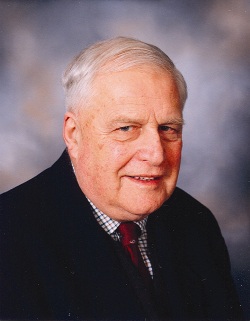 Cosmology for dummies
Cosmology for dummies
Geoscientist 19.3 March 2009
Earth scientists should be interested in the origins of the universe, even if they find the subject difficult to fully understand. I recently read a delightful book by Martin Rees
1 on the subject, in which from the astronomer’s viewpoint he was very positive that the Big Bang theory is gospel truth. A recent BBC programme on Big Bang (2.1.09) presented the subject brilliantly (so that even I felt I understood particle physics!) but was was not so positive. There remains the problem of dark matter, which has never been found (and which I felt could have been taken further in the programme). However, the main problem facing physicists is the trauma between gravitational and particle physics theory, and the equally elusive Higgs particle. The experts expressed a healthy difference of opinion about what the giant ‘hadron’ experiment near Geneva will show us (if it ever gets going again). They gave percentage values to their opinions on the likelihood of certain outcomes, but not, unfortunately, on the likelihood of the experiment blowing up the world.
However, as a scientist involved only from a planetological point of view, the problem seemed to me to involve much more than a resolution of these physical anomalies. There appeared to be a huge problem in the acceptance of the opening statement that in the beginning there was no matter and no space. To make a minute ultradense speck of matter out of nothing is against all the laws of physics; furthermore, if there is no space how can it suddenly ’be put there’? Why, perhaps, did not a cluster of such specks appear? There is an immense problem in the formation, as well as of the speck, of the great extent of space with dimensions that has to be formed alongside it for it to expand into. Is this limitless, infinite, as indicated by the continual outward movement of the galaxies? The reason for the initial explosion of the first particles seemed glossed over. And, of course, there was no answer for the ultimate question of why did nothing suddenly produce matter at all?
- Rees, M. 2001. Our Cosmic Habitat. Weidenfeld and Nicolson, 205pp.